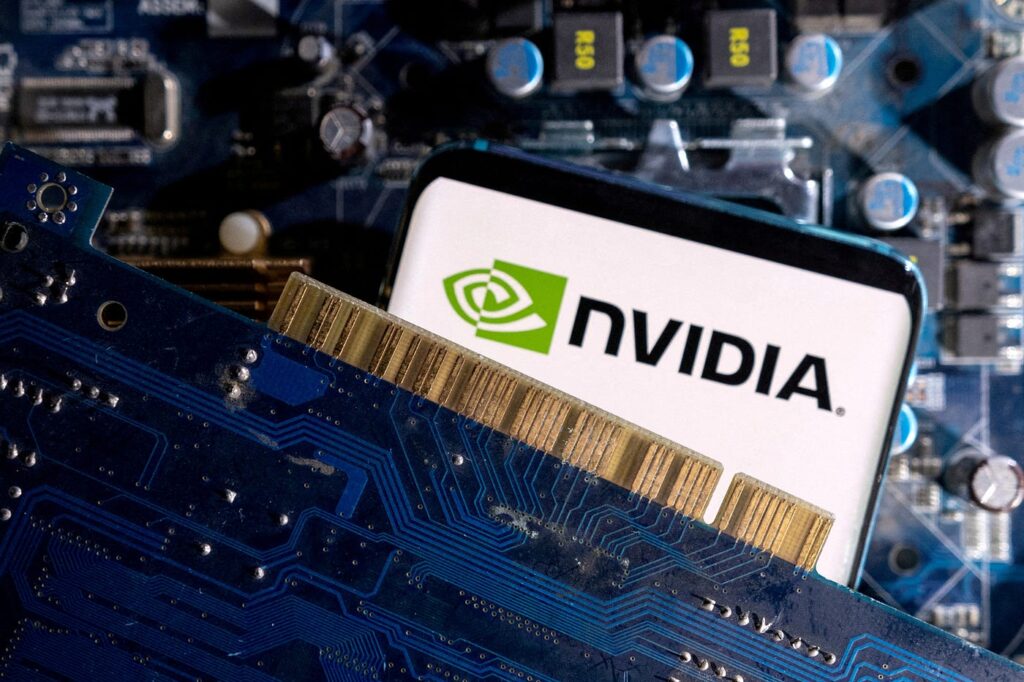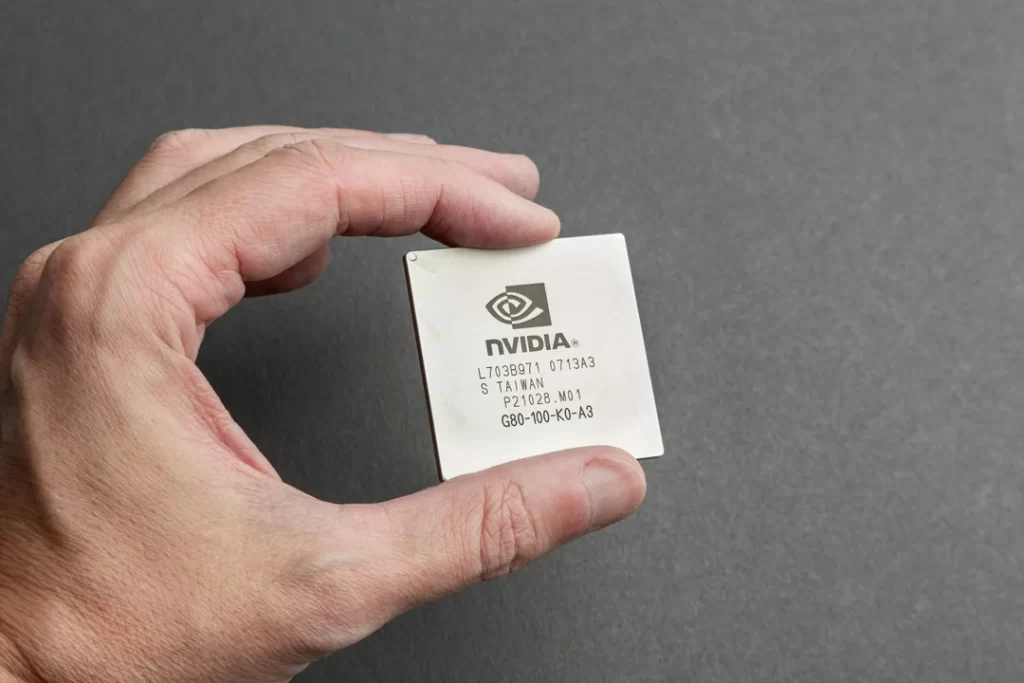Nvidia’s ascent to the pinnacle of the tech industry is a tale of vision, innovation, and strategic brilliance. Once a niche player in the graphics card market, Nvidia has evolved into a trillion-dollar enterprise, leading the charge in artificial intelligence (AI) and transforming multiple industries. This article explores Nvidia’s journey from its early days to its current status as a tech titan, unraveling the strategic decisions and innovations that propelled its rise.
The Genesis: Nvidia’s Inception and Early Challenges
Nvidia was founded in 1993 by Jensen Huang, Chris Malachowsky, and Curtis Priem. The trio envisioned a future where personal computers could deliver high-quality 3D graphics akin to those seen in blockbuster films like Jurassic Park. At the time, CPUs were inadequate for the repetitive, math-intensive demands of rendering 3D graphics. The founders proposed a novel solution: a separate hardware processor capable of parallel processing, which would later become known as the graphics processing unit (GPU).
The company’s name, Nvidia, is a combination of “nV” (next version) and “Invidia” (Latin for envy), reflecting their ambition to create technology that would make others envious. Their first major product, the NV1, launched in 1995, but failed commercially due to its incompatible quadrangle-based image rendering architecture. Despite this setback, Nvidia pivoted to focus on the burgeoning PC gaming market, launching the GeForce 256 in 1999, the world’s first GPU. This programmable graphics card revolutionized the gaming experience and popularized the term GPU, marking a significant turning point for the company.
Strategic Innovations and Market Expansion
A key strategic decision for Nvidia was to operate as a fabless company, outsourcing manufacturing to Taiwan Semiconductor Manufacturing Company (TSMC). This approach allowed Nvidia to concentrate on design and innovation while keeping capital expenditures low. The partnership with TSMC proved crucial, enabling Nvidia to scale production efficiently and meet growing market demands.
In 2006, Nvidia introduced CUDA (Compute Unified Device Architecture), a software toolkit that transformed its GPUs from graphics-only devices into parallel computing powerhouses. CUDA enabled developers to harness the massive parallel processing capabilities of GPUs for a wide range of applications beyond gaming, including data processing, scientific research, and AI. This innovation democratized access to parallel processing, significantly impacting fields like cloud computing and machine learning.
The AI Boom: Nvidia’s Strategic Shift
Nvidia’s strategic shift towards AI began to pay dividends with the rise of deep learning and neural networks. The turning point came in 2012 when Alex Krizhevsky used Nvidia GPUs for deep learning in the ImageNet competition, demonstrating the potential of GPUs in AI. This breakthrough, coupled with the rise of AI applications like OpenAI’s ChatGPT, drove massive demand for Nvidia’s GPUs.
Nvidia’s A100 GPUs, introduced in 2020, became the standard for training and deploying AI models. These GPUs, designed specifically for AI workloads, offered unparalleled performance and efficiency, solidifying Nvidia’s leadership in the AI chip market. The public release of ChatGPT in late 2022 further boosted Nvidia’s stock as demand for AI-capable hardware surged. By this time, AI-related sales constituted a significant portion of Nvidia’s revenue, reflecting the booming interest in AI technologies.

Overcoming Challenges and Navigating Market Fluctuations
Nvidia’s journey was not without challenges. The company faced geopolitical risks, market fluctuations, and intense competition. U.S.-China trade tensions and new export controls on AI chips to China posed significant risks, as a substantial portion of Nvidia’s revenue came from China. Additionally, reliance on TSMC made Nvidia vulnerable to potential disruptions in Taiwan.
To mitigate these risks, Nvidia supported the U.S. Chips Act, aimed at boosting domestic chip manufacturing. TSMC’s investment in building fabs in Arizona provided Nvidia with more diversified manufacturing options, ensuring a stable supply chain amid geopolitical uncertainties.
Expansion Beyond Gaming: Diversifying Applications
While gaming remains a core part of Nvidia’s business, the company has successfully expanded into various other sectors. Nvidia’s GPUs are now integral to data centers, cloud computing, and AI applications across industries. In healthcare, Nvidia’s technology accelerates drug discovery and DNA sequencing.
Nvidia’s Tegra chips, initially unsuccessful in the smartphone market, found new life in autonomous driving technology and robotics.
Partnerships with carmakers like Mercedes-Benz led to the development of the Nvidia Drive platform, which supports both assisted and fully autonomous driving.
Nvidia’s Omniverse, an ambitious project integrating computer graphics, AI, robotics, and physics simulation, aims to create a collaborative virtual environment for simulating and optimizing real-world processes. With over 700 customers, including those in the automotive, logistics, and renewable energy sectors, the Omniverse represents Nvidia’s commitment to pushing the boundaries of innovation.
Leadership and Organizational Culture
Jensen Huang, Nvidia’s CEO since its inception, has been instrumental in the company’s success. His management style emphasizes a flat organizational structure, agility, and direct communication. Despite economic downturns, Nvidia has avoided layoffs and focused on retaining top talent. This approach has contributed to their resilience and continued innovation.
Huang’s visionary leadership and strategic risk-taking have positioned Nvidia at the forefront of the AI revolution. His foresight in recognizing the potential of AI, coupled with the development of AI-optimized GPUs and the CUDA platform, has propelled Nvidia to a leadership position in the tech industry.

Navigating Controversies and Market Dynamics
Nvidia’s journey has not been without controversies. The 2018 crypto mining boom led to a surge in GPU prices and revenue, but Nvidia faced legal issues for allegedly downplaying the impact of crypto mining on their revenue. They settled with the SEC in 2022, agreeing to improve revenue disclosures. Nvidia also faced challenges in its relationship with key partner EVGA, which severed ties with Nvidia due to unsatisfactory communication about pricing strategies. Despite these challenges, Nvidia’s commitment to innovation and strategic foresight has enabled the company to navigate market dynamics and maintain its leadership position.
The Road Ahead: Opportunities and Challenges
Looking ahead, Nvidia’s future is filled with opportunities and challenges. The increasing demand for AI, data center solutions, and high-performance computing presents significant growth opportunities for Nvidia. However, the company must navigate intensifying competition, geopolitical tensions, and supply chain disruptions to sustain its growth and maintain its market position. Nvidia’s ability to innovate and adapt will be crucial in addressing these challenges. The company’s continued investment in AI research and development, strategic partnerships, and expansion into new markets will play a pivotal role in shaping its future trajectory.
Nvidia’s Impact on Industries
Nvidia’s influence extends beyond the tech industry, impacting various sectors with its innovative technologies. In healthcare, Nvidia’s GPUs are used for medical imaging, genomics, and drug discovery, accelerating research and improving patient outcomes.
In automotive, Nvidia’s Drive platform powers autonomous vehicles, enhancing safety and efficiency on the roads.
In entertainment, Nvidia’s GPUs enable cutting-edge visual effects and real-time rendering, transforming the way movies and games are created and experienced.
Nvidia’s Omniverse is set to revolutionize industries by providing a collaborative virtual environment for simulating and optimizing real-world processes. This platform has the potential to enhance efficiency and innovation in manufacturing, logistics, and other sectors, further solidifying Nvidia’s impact on the global economy.
The Role of AI in Nvidia’s Success
AI has been a driving force behind Nvidia’s meteoric rise. The company’s GPUs, optimized for AI workloads, have become essential tools for researchers and developers, enabling breakthroughs in machine learning, natural language processing, and computer vision. Nvidia’s investment in AI research and development has paid off, positioning the company as a leader in the AI revolution. Nvidia’s GPUs power some of the most advanced AI applications in the world, including self-driving cars, smart cities, and advanced robotics. The company’s technology enables real-time data processing and decision-making, making it a critical component of the AI ecosystem.

Strategic Partnerships and Collaborations
Nvidia’s success is also attributed to its strategic partnerships and collaborations with leading tech companies, research institutions, and industry leaders. By forming alliances with companies like Microsoft, Google, and Amazon, Nvidia has ensured the seamless integration of its hardware and software solutions with leading cloud platforms and operating systems. These partnerships have expanded Nvidia’s reach and influence, facilitating the adoption of its technology across various industries. Collaborations with research institutions and universities have also played a crucial role in Nvidia’s success. By partnering with renowned academic experts, Nvidia has tapped into cutting-edge research and development, driving innovation and advancing AI technologies.
Innovations in GPU Technology
Nvidia’s continuous innovation in GPU technology has been a cornerstone of its success. The company’s GPUs have evolved from simple graphics processors to powerful computing engines capable of handling complex AI and data processing tasks. Innovations such as CUDA, Tensor Cores, and the Hopper architecture have set new standards in GPU performance and efficiency.
Nvidia’s GPUs are designed to handle massive amounts of data and perform parallel computations at unprecedented speeds. This capability has made them indispensable for AI applications, scientific research, and high-performance computing. The company’s commitment to innovation ensures that its GPUs remain at the forefront of technological advancements, driving progress across multiple industries.
The Human Element: Nvidia’s Workforce and Culture
Nvidia’s success is not only a result of its technological innovations but also its talented workforce and unique organizational culture. Jensen Huang’s leadership has fostered a culture of collaboration, agility, and continuous learning. Nvidia’s employees are encouraged to take risks, experiment with new ideas, and push the boundaries of what is possible. The company’s flat organizational structure promotes open communication and collaboration across teams, enabling rapid decision-making and innovation. Nvidia’s focus on retaining top talent and providing opportunities for professional growth has contributed to its resilience and sustained success.
Nvidia’s Global Impact
Nvidia’s influence extends beyond the tech industry, impacting the global economy and society. The company’s technologies have enabled significant advancements in healthcare, transportation, entertainment, and scientific research. Nvidia’s commitment to sustainability and corporate responsibility further enhances its global impact. The company invests in green technologies, promotes energy-efficient computing, and supports initiatives to reduce its environmental footprint. Nvidia’s efforts to drive positive change and contribute to a better world align with its mission to innovate for the benefit of humanity.

The Most Valuable Company in the World
Nvidia’s recent surge to become the most valuable public company, surpassing Microsoft, is a remarkable achievement driven primarily by its dominant position in the artificial intelligence (AI) market. Nvidia’s market valuation soared past $3 trillion, a significant jump from just under $1 trillion a year ago.
The AI boom has spurred massive investments in Nvidia’s AI-enabling chips from major tech companies, including Meta, Alphabet, Amazon, and Microsoft. This demand has propelled Nvidia’s stock price to new heights, rising more than 147% since January 2024. Nvidia’s sales figures reflect this growth, with quarterly revenue reaching $26 billion, a 262% increase year-over-year.
In contrast, Apple’s growth has been slower, with its stock rising only about 1.73% since January. Apple’s recent financial results showed a 4% drop in overall sales and a 10% decline in iPhone sales, contributing to its inability to keep pace with Nvidia’s rapid ascent. Despite trading near record highs, Apple’s stagnation is partly due to strategic questions about its AI integration and lower demand in key markets like China.
Conclusion: A Legacy of Innovation and Impact
Nvidia’s remarkable ascent from a struggling startup to a tech behemoth worth trillions highlights their ability to adapt, introduce cutting-edge technologies, and exhibit forward-thinking leadership. Their impact on gaming, AI, and beyond underscores their significance in the digital age, positioning them as a critical player in shaping the future of technology.
Nvidia’s journey is a story of strategic risk-taking, resilience, and relentless pursuit of innovation.
As the demand for AI technology continues to grow, Nvidia remains a critical player, supplying the essential hardware that powers much of the industry’s advancements. This remarkable journey serves as an inspiration for tech companies and highlights the transformative potential of strategic innovation in the rapidly evolving technology landscape.
Reflecting on Nvidia’s journey, it is clear that the company’s success is built on a foundation of innovation, resilience, and strategic vision. From its early days of pioneering GPU technology to its current status as a leader in AI, Nvidia has consistently pushed the envelope, setting new standards and driving advancements across multiple industries.
Nvidia’s story is a powerful reminder of the importance of vision and adaptability in the tech industry. As the company continues to evolve and expand its horizons, it serves as a beacon of inspiration for other tech firms, demonstrating the potential for innovation to drive transformative change and create lasting impact.
As we look to the future, Nvidia’s legacy of innovation and impact will undoubtedly continue to shape the tech landscape, influencing the development of new technologies and driving progress in AI, gaming, and beyond. The company’s success story demonstrates the importance of visionary leadership and strategic foresight, inspiring tech giants and innovators worldwide.






















